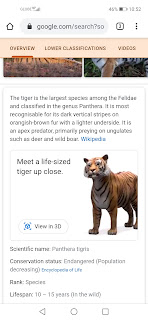I had a bit of an epiphany today.
By now most of us are aware that recent revelations by journalist Bob Woodward showed that President Donald Trump was privately telling him one set of things about COVID-19 back in January and February this year, but publicly telling the American people quite another.
Because the things Trump told Woodward more closely resembleds what we have consistently heard from mainstream science, most of us have automatically assumed that this set of statements was what Trump "knew", and that therefore he had been untruthful to the American people. Add to this Trump's own "admission" to Woodward that he liked "playing it down", and it does seem all the more logical to conclude that Trump was lying to the American people. Still, there was a little kernel of discomfort I have always had churning inside me with this intuitive inference - a logical disconnect if you will - and today I finally realized why.
Listen thoroughly to the conversations and you will realize that way back on February 7 2020, when much was yet unknown about the virus, Trump was definitively telling Woodward that it was airborne. "It goes through air Bob.. You just breathe the air and that's how it's passed..." If mainstream science had not yet established this back in February, where was Trump getting his information? In fact, even to this day, I don't think it has been established that COVID-19 is airborne in the traditional sense of the word. Technically, "airborne" means it can hang and travel through air for long distances and long periods of time. While not a doctor, I believe this has not been concluded regarding COVID; rather, what has been concluded is that it can behave as if it is airborne when "aerosolized" indoors. Granted, back in February, Trump might have heard speculation from his medical advisers that the virus may be airborne, but certainly not with the degree of certainty with which he communicated this to Woodward. This leads me to conclude that perhaps we should not reach the instinctive conclusion that Trump knew the science and lied to the American public; because it is equally likely, in fact more likely, that he did not know the science and was lying to Bob Woodward.
Now, why would he do that? Well, Woodward was writing a book about him, and if that book were to frame the virus as this potent, invisible, irresistible, unstoppable foe, imagine how heroic Trump would look if and when, as he truly believed, the virus just disappeared (aided by warm weather and a few million doses of hydroxychloroquine).
So in my opinion, it actually makes a lot of sense that Trump was lying less to the American people than he was to Bob Woodward, with his goal being to provide a preferred historical narrative regarding the health crisis to be delivered by Woodward's book.
And that, is actually more troubling than the realization that the POTUS was lying to the American public.
If Trump did indeed lie to the American people, I maintain that it certainly wouldn't be the first time an American President has done so. Arguably, it is sometimes a necessary element of leadership. But what is truly worrisome is having a leader who buries his head in the sand, believing simply what he prefers to believe, either unwilling or incapable of processing new information and assessing scientific and empirical evidence.
Such a leader, if he were to come into the belief, either out of preference or convenience, that the proper way to navigate a minefield is to close one's eyes and walk confidently through it, would in all sincerity lead his followers through a minefield this way, totally oblivious to the resulting destruction and carnage. And that, is truly frightening.
The idea that the commander-in-chief of the most powerful nation on earth has a firm grasp on the science, but chooses to lie to his people, even with the knowledge of resulting collateral damage, because of some higher plan or vision, is far less terrifying to me than the realization that what we see is truly all that we are getting. It is infinitely more horrific to me to realize that this commander-in-chief will really willfully disregard scientific evidence because hydroxychloroquine is such a convenient answer to the problem he is tasked to solved; that his level of intelligence finds the idea of injecting disinfectant into the human body a promising and plausible alternative.
I would really rather learn that Donald J. Trump lies all the time, because what is truly scary is that he isn't lying.
And yet, if we look at his history, how he, for instance, destroyed the United States Football League while still insisting that he was the best thing that had ever happened to it, how he went into Atlantic City and arguably left a path of destruction in his wake; and well, I can't help but reach the conclusion that a stronger case can be made for the latter: Donald J. Trump really does believe most of the things he tells us.
Except things are so much different now, he is no longer leaving his distinctive indelible mark on a football league or even a city, he is leaving it on a large, influential country, and thus the global village to which it belongs.
None of us will remain unaffected.












